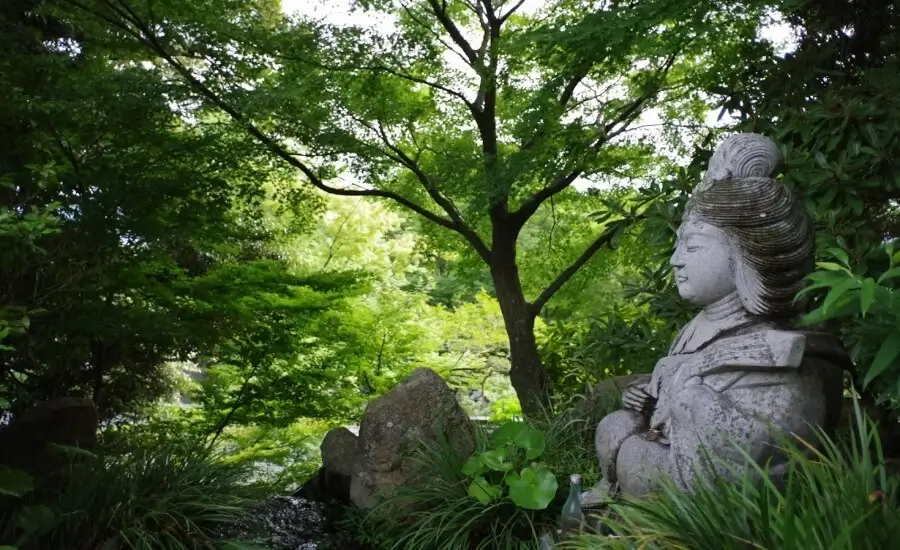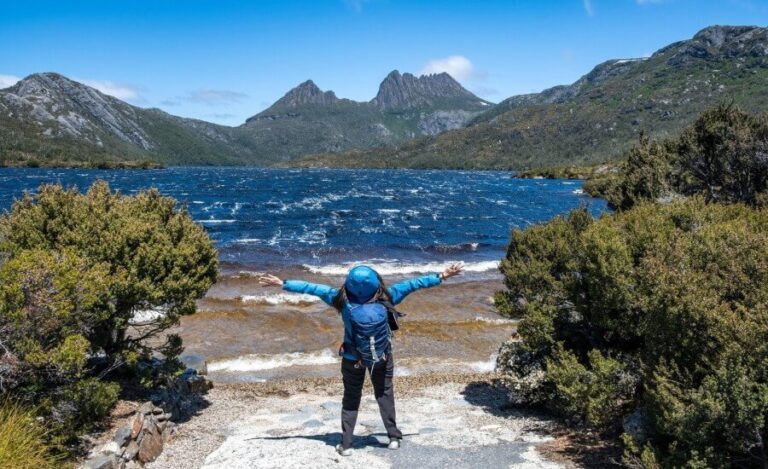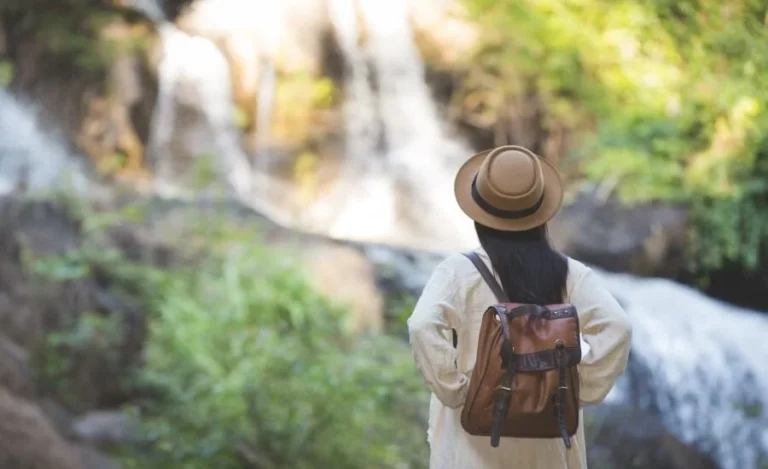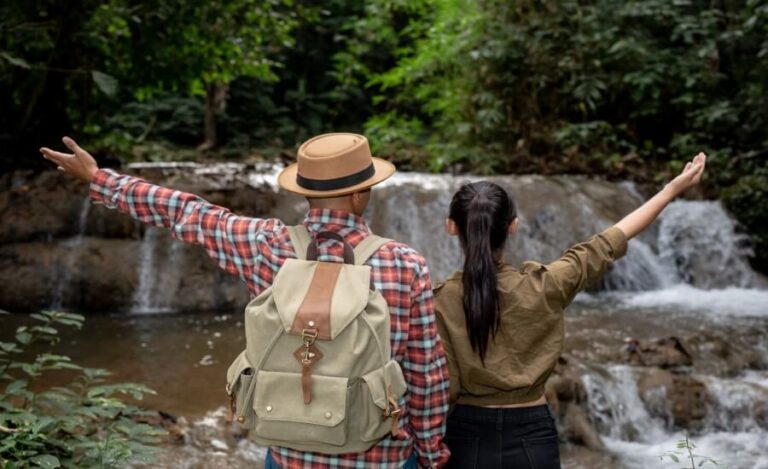
In a world where notifications ping incessantly and workdays blur into evenings, a profound yearning has emerged—a desire to discover places where time slows, where attention can finally rest on the present moment, and where the constant digital hum fades to silence. These rare Underrated Sanctuary destinations — hidden sanctuaries for mindful travel—offer something increasingly precious: the space to remember who we are beneath our online personas and professional roles.
Unlike typical tourist destinations designed for consumption and distraction, mindful sanctuaries invite travelers into a different relationship with place. They ask us to arrive fully, to engage all our senses, and to participate in the ancient human practice of deep presence. In these extraordinary locations, travelers discover that the most meaningful journeys often happen internally, paralleling the external exploration.
This guide reveals seven of the world’s most exceptional hidden sanctuaries for mindful travel—places where natural beauty, cultural wisdom, and thoughtful stewardship create optimal conditions for transformation. These secret places or destinations remain relatively unknown not through lack of merit, but through deliberate protection from mass tourism. They welcome the mindful traveler while maintaining the very qualities that make them sanctuaries in the first place.
What Makes a True Sanctuary for Mindful Travel?

Before exploring specific destinations, understanding what constitutes a genuine sanctuary for mindful travel helps distinguish these rare places from conventional tourist offerings increasingly marketed as “mindful.”
True sanctuaries share several essential qualities:
Containment and Boundaries
Unlike destinations that blur into surrounding commercialization, authentic sanctuaries maintain clear boundaries—physical, energetic, and intentional. These boundaries create a container for transformation, separating the space from ordinary experience and signaling to the nervous system that different rules apply within.
This containment appears in various forms: monastery walls, natural features like mountains or waters that encircle the location, or simply a profound shift in atmosphere that visitors universally describe as “entering another world.”
Lineage of Contemplative Practice
While beautiful locations abound, true sanctuaries hold a living history of contemplative practice. Whether through formal spiritual traditions, Indigenous wisdom lineages, or artistic communities dedicated to presence, these places carry accumulated wisdom about the journey inward.
This lineage manifests in architecture designed for reflection, established daily rhythms that support awareness, and often the presence of practitioners who embody the transformation these places make possible.
Natural Elements That Support Nervous System Regulation
The most powerful sanctuaries incorporate specific natural elements scientifically shown to regulate human nervous systems: moving water, specific sound qualities, particular light patterns, negative ion concentrations, or plant compounds that affect human physiology.
Often established centuries before modern neuroscience, these locations nevertheless demonstrate remarkable understanding of the environments that best support human contemplation and wellbeing.
Limited Access and Technological Barriers
True sanctuaries maintain their power partly through limiting visitor numbers and creating natural barriers to constant connectivity. Rather than maximizing tourist revenue, these places prioritize maintaining the very qualities that make them transformative.
Some require significant journeys to reach, others maintain guest limitations, and many naturally discourage digital device use through remote locations or community norms around technology.
Have you noticed how differently you feel in spaces deliberately designed for presence versus those optimized for consumption? This distinction forms the essence of what separates a true sanctuary from a merely beautiful destination.
1. Koyasan’s Hidden Temples: Japan’s 1,200-Year-Old Mountain Sanctuary

High in the forested mountains of Wakayama Prefecture lies Koyasan, a plateau containing a 1,200-year-old Buddhist temple complex far less visited than Kyoto yet offering a more immersive contemplative experience. While Mount Koya itself appears on some tourist itineraries, the true sanctuary experience lies in its lesser-known temple lodgings (shukubo) that welcome overnight guests.
The Sanctuary Experience
Among Koyasan’s 117 temples, several remote ones offer the opportunity to participate in the daily practices of a living Buddhist community. Particularly noteworthy is Ekoin Temple, whose forest location and traditional design create natural containment from digital distraction.
Guests participate in morning meditation (ajikan), sutra copying (shakyo), and fire ceremonies (goma) led by practicing monks. The temple’s nighttime cemetery walk through Okunoin—Japan’s largest cemetery with tombs dating to the 9th century—creates what neuroscientists would now recognize as a perfect condition for default mode network activation, the brain state associated with insight and perspective-taking.
Mindfulness in Practice
What distinguishes Koyasan from tourist experiences is the integration of contemplative practices into daily life. Meals exemplify this approach—the served shojin ryori (Buddhist vegetarian cuisine) becomes a mindfulness practice itself, with precisely arranged seasonal ingredients presented as an invitation to full sensory awareness.
The temple architecture incorporates specific features that naturally guide attention inward: low doorways requiring conscious entry, tatami rooms that regulate movement, and carefully placed windows framing forest views that shift with seasonal changes.
Digital Disconnection by Design
Many of Koyasan’s temple lodgings maintain spotty or non-existent WiFi connections, with cell service limited by the mountainous topography. This natural technological barrier, combined with thick walls that block signals, creates effortless digital disconnection.
Visitors consistently report that this connectivity limitation becomes one of the experience’s most valued aspects, with many describing a palpable “pressure release” after the initial adjustment period.
How to Access: Reach Koyasan via a combination of train and cable car from Osaka, approximately 2 hours. For the deepest experience, book directly through temple websites rather than commercial booking platforms, and request rooms farthest from main buildings.
2. The Living Sanctuary of Wirikuta: Mexico’s Sacred Desert

In the high desert of San Luis Potosí, Mexico, lies a landscape the Huichol (Wixáritari) people have made pilgrimages to for over 2,000 years. Wirikuta, centered around the sacred mountain Cerro Quemado, represents one of North America’s most intact Indigenous sacred landscapes and has emerged as a profound destination for mindful travelers seeking to understand humanity’s ancient relationship with place.
The Sanctuary Experience
Unlike developed tourist sites, Wirikuta is a living cultural landscape where the boundaries between natural features and sacred space dissolve. The Huichol conceive of the entire region as the origin place of the sun, with specific mountains, springs, and rock formations embodying deities and ancestral beings within their cosmology.
For mindful travelers, the region offers extraordinary opportunities for contemplative immersion through locally-guided desert walks, traditional ceremonies (with proper invitations and permissions), and extended silent retreats in remote desert ecolodges specifically established to protect the region’s cultural and ecological integrity.
Mindfulness in Practice
What makes Wirikuta exceptional is its 2,000-year tradition of attention-training through pilgrimage practices. The traditional Huichol pilgrimage involves specific perceptual practices: walking hundreds of miles while maintaining awareness of each step as connecting to ancestors, fasting to heighten sensory perception, and developing precise attention to natural phenomena as communication from the living landscape.
While traditional pilgrimages remain the domain of Huichol communities, respectful visitors working with local guides can experience forms of these practices adapted for cultural outsiders. These might include guided sensory awareness walks, instruction in traditional Huichol ecological knowledge about desert plants, and opportunities to support conservation efforts protecting the region from mining threats.
Digital Disconnection by Design
The remote desert location naturally creates technological barriers, with vast areas lacking cell coverage or electrical infrastructure. This disconnection is further supported by local guides and retreat centers that explicitly frame the experience as an opportunity to establish different relationships with attention and time.
The stark desert landscape itself acts as a natural attention reset, with studies showing that arid environments with expansive horizons create specific brainwave patterns associated with contemplative states.
How to Access: Fly to San Luis Potosí and arrange transportation to Real de Catorce, the main access point to the region. Work exclusively with locally-owned guides and accommodations that demonstrate clear commitments to Huichol sovereignty and ecological protection.
3. The Hermitages of Mount Athos: Europe’s Last Medieval Sanctuary

On a fingerlike peninsula extending into the Aegean Sea stands Mount Athos, an autonomous monastic republic that has maintained continuous spiritual practice for over 1,000 years. While the main monasteries receive limited visitors, the peninsula’s true hidden sanctuaries are its scattered hermitages and sketes (small monastic communities) tucked into remote coastlines and forested valleys.
The Sanctuary Experience
What distinguishes Mount Athos from reconstructed historical sites is its living continuation of medieval monastic practices. The entire peninsula operates on Byzantine time (days begin at sunset) and follows the Julian calendar, creating immediate temporal displacement for visitors. The absence of motorized vehicles on most of the peninsula necessitates walking contemplative paths connecting sacred sites.
For those seeking deeper immersion, the remote hermitages—particularly those along the peninsula’s wild eastern coastline—offer the rare opportunity to experience environments specifically designed for the development of contemplative attention, largely unchanged since the 10th century.
Mindfulness in Practice
The Athonite hesychastic tradition (from the Greek hesychia, meaning “stillness” or “silence”) centers on practices developing non-discursive awareness through breath attention—methods strikingly similar to contemporary secular mindfulness but embedded within a 1,000-year lineage of transmission.
Visitors can engage with these practices through participation in the daily rhythm of services (often beginning at 3:00 am), work alongside monks in traditional activities like olive harvesting or bread making, and walking the kalderimi (stone footpaths) that connect sacred sites through old-growth forests.
Digital Disconnection by Design
Mount Athos maintains some of Europe’s strictest limitations on modern technology. Many monasteries prohibit the use of electronic devices entirely, while the peninsula’s mountainous topography naturally limits connectivity in remote areas. More significantly, the entire temporal and social structure explicitly counteracts the acceleration characteristic of digital culture.
The absence of conventional tourism infrastructure—no hotels, restaurants, or souvenir shops exist on the peninsula—further supports this separation from contemporary patterns of consumption and distraction.
How to Access: Mount Athos requires advance permits (diamonitirion) limited to 100 non-Orthodox visitors daily, obtained through the Mount Athos Pilgrim’s Bureau in Thessaloniki, Greece. For the hermitage experience, request lodging at smaller sketes rather than major monasteries, and prepare for basic accommodations and considerable walking.
4. The Tassajara Zen Mountain Center: California’s Hidden Desert Monastery

Nestled in a remote valley of the Ventana Wilderness, accessible only by a challenging 14-mile dirt road, lies North America’s oldest Zen Buddhist monastery. Established in 1967 by Shunryu Suzuki Roshi, Tassajara combines Japanese Soto Zen tradition with Western environmental stewardship to create an extraordinary sanctuary for contemplative practice.
The Sanctuary Experience
Tassajara’s power derives partly from its dramatic separation from ordinary life. The journey in requires navigating “the road”—a narrow, winding dirt path traversing steep mountain terrain that naturally creates the psychological transition needed for deep retreats.
Once arrived, visitors encounter a carefully designed environment where every element supports awareness: meditation halls positioned to capture specific light qualities, gardens cultivated for sensory engagement, and natural hot springs used ritually for centuries by indigenous Esselen people before the monastery’s establishment.
Mindfulness in Practice
Unlike retreat centers that merely offer classes in meditation, Tassajara embodies an integrated practice environment where formal meditation (zazen) forms one element within a larger ecology of attention. Guests participate in the monastery’s daily schedule, including:
- Predawn meditation periods in the zendo (meditation hall)
- Formal oryoki meals eaten in contemplative silence with ritualized movements
- Work practice (samu) applying meditative awareness to practical tasks
- Hot spring bathing practices that cultivate embodied presence
- Evening services incorporating chanting and movement
This comprehensive approach reflects current neuroscience findings that varied attention practices activate different neural networks, creating more robust cognitive effects than single-method approaches.
Digital Disconnection by Design
Tassajara maintains a complete absence of internet connectivity, cell service, or electricity in guest areas. Lighting comes from kerosene lamps, heating from wood stoves, and timekeeping from traditional wooden instruments (han and densho) rather than digital alerts.
This technological simplicity supports what the Zen tradition calls “the backward step”—the shift from doing to being that characterizes contemplative awareness. The monastery’s daily schedule, with designated periods of silence and activity, further creates a container for attention fundamentally different from digital rhythms.
How to Access: Tassajara opens to guests only during summer months (May-September). Reserve well in advance through San Francisco Zen Center. Arrange transportation to Jamesburg where guests transfer to four-wheel drive vehicles for the final approach. Consider participating in the “Guest Practice Program” rather than simply booking accommodations for a deeper experience.
5. Dzogchen Monastery Hidden Retreat Centers: Tibet’s High Mountain Sanctuaries

In the eastern Tibetan region of Kham, at elevations exceeding 13,000 feet, lie the retreat facilities of Dzogchen Monastery—among the tradition’s most important contemplative centers. While the main monastery receives visitors, its network of hidden retreat centers tucked into surrounding mountains remains largely unknown to outsiders yet accessible to sincere practitioners.
The Sanctuary Experience
These retreat centers exemplify perfect contemplative design, with simple stone structures positioned in locations selected for specific energetic qualities according to Tibetan geomantic principles. Some facilities occupy caves used by meditation masters for over 800 years, while others feature simple wooden structures oriented to capture particular mountain views and light qualities.
The high elevation itself creates physiological changes supporting contemplative states, with lower oxygen levels naturally slowing physical activity and the rarefied atmosphere creating exceptional light quality that practitioners report enhances visual clarity and perception.
Mindfulness in Practice
What distinguishes these sanctuaries is their living embodiment of Tibet’s sophisticated attention-training technologies—particularly Dzogchen (Great Perfection) practices cultivating non-conceptual awareness through sky-gazing, dark retreat, and nature-based contemplation.
Visitors with proper introduction can receive guidance in these methods from resident practitioners and participate in group practices that have remained continuous despite political upheavals. These include:
- Thodgal practice using natural light phenomena to train perception
- Sound-based attention practices utilizing mountain acoustics
- Dream yoga utilizing the monastery’s high-elevation effects on sleep cycles
- Natural movement practices in specific landscape formations
Digital Disconnection by Design
The remote location creates natural technological barriers, with no cell coverage or internet infrastructure. More importantly, the traditional frameworks explicitly address issues of attention and distraction, offering sophisticated methods for working with mental proliferation that have new relevance in the digital age.
The monastic schedule, with practice sessions coordinated by traditional instruments rather than clocks, establishes temporal patterns that research shows help reset circadian rhythms disrupted by digital timing structures.
How to Access: This sanctuary requires significant commitment to reach. Fly to Chengdu, China, then take a series of buses and jeeps to Garze Tibetan Autonomous Prefecture. Proper introduction through established Tibetan Buddhist teachers is essential for access to retreat facilities beyond the main monastery.
6. The Valley of the Gods: Indigenous Wisdom in Utah’s Hidden Canyons

In southeastern Utah, a lesser-known counterpart to Monument Valley lies hidden among serpentine canyons and towering sandstone formations. The Valley of the Gods, considered sacred by multiple Indigenous nations including Navajo and Ute people, has emerged as a profound sanctuary for contemplative practice guided by Indigenous wisdom keepers who share traditional knowledge about human relationship with place.
The Sanctuary Experience
Unlike developed parks with designated viewpoints and interpretive signage, the Valley of the Gods remains largely unmarked, with minimal infrastructure and few visitors compared to nearby destinations. This preservation of natural features without interpretive mediation creates a rare opportunity for direct relationship with landscape.
Indigenous-led experiences here focus on sensory relationship rather than information acquisition. Programs might include nighttime sensory awareness practices under some of North America’s darkest skies, traditional storytelling connected to specific landforms, and ceremonies (when appropriate) that have maintained human-landscape relationship for thousands of years.
Mindfulness in Practice
What makes this region exceptional is access to one of North America’s oldest continuous traditions of place-based attention training. Indigenous guides share practices including:
- Directional awareness methods using landscape features rather than devices
- Tracking practices that develop granular observational skills
- Silence practices in acoustically significant landscape formations
- Dream incubation connected to specific canyon locations
- Seasonal awareness practices tracing subtle environmental changes
These approaches offer powerful alternatives to device-mediated experiences of landscape, revealing relationships with place inaccessible through conventional tourism.
Digital Disconnection by Design
The canyon topography naturally limits connectivity, with minimal cell coverage throughout the region. This technological limitation supports the perceptual shift from information-gathering to direct relationship that characterizes Indigenous approaches to landscape.
Programs often explicitly frame digital disconnection as preparation for different perceptual modes, with initial days focused on sensory recalibration before introducing traditional practices that require sustained attention.
How to Access: Fly to Grand Junction, Colorado or St. George, Utah, then drive to Bluff or Mexican Hat. Work exclusively with Indigenous-owned guide services that demonstrate clear commitment to cultural protocols and environmental protection. Valley of the Gods Bed & Breakfast provides a locally-owned base near the valley.
7. The Silent Temple Caves of Phang Nga Bay: Thailand’s Forgotten Sanctuaries

Among the limestone karst formations of Thailand’s Phang Nga Bay lie hidden hongs (collapsed cave systems) containing small temple caves established by Buddhist monks seeking isolation for deep practice. While nearby beaches fill with tourists, these chamber-like caves accessible only by kayak at specific tide times remain sanctuaries of profound silence and concentration.
The Sanctuary Experience
These natural temples combine several elements creating optimal conditions for contemplative practice: the acoustically significant environment of limestone chambers, the liminal experience of caves as threshold spaces between worlds, access determined by natural tidal patterns rather than human scheduling, and the containing effect of enclosed spaces opening to sky views.
Unlike commercialized cave experiences with artificial lighting and developed pathways, these temple caves remain largely as they have been for centuries—simple platforms for sitting practice, minimal Buddha images, and the natural features of the limestone creating their primary atmosphere.
Mindfulness in Practice
The particular power of these sanctuaries comes through their embodiment of traditional Thai Forest Tradition practices, which emphasize the development of samadhi (concentrated awareness) through environmental support. Specific practices include:
- Cultivating awareness of natural light changes as sun angles shift through cave openings
- Using the natural acoustics of limestone chambers for mantra practice
- Developing embodied awareness through mindful movement in tidal-dependent spaces
- Building concentration through extended sitting periods in spaces free from conventional distractions
Local monastics sometimes visit these sites for temporary retreats and can provide guidance to respectful visitors interested in traditional practices rather than tourist experiences.
Digital Disconnection by Design
The caves’ locations within limestone formations naturally block connectivity, while their tidal access creates further separation from on-demand availability characteristic of digital culture. The cave acoustics—which amplify natural sounds while absorbing others—create sonic environments that research associates with particular brainwave states conducive to meditation.
More subtly, the need to coordinate visits with natural tidal cycles rather than convenience establishes a fundamentally different relationship with time than the on-demand quality of digital experience.
How to Access: Fly to Phuket or Krabi, then arrange transportation to smaller coastal villages like Ao Nang. Seek locally-owned kayaking guides who specifically mention the temple caves rather than general tour operators. Request early morning departures to reach the caves before larger tour groups and to maximize wildlife encounters.
Mindful Engagement: Practices for Deepening Sanctuary Experiences

Regardless of which sanctuary you visit, certain practices enhance the transformative potential of these extraordinary places:
The Threshold Practice
Anthropologists have identified “threshold rituals” across cultures as essential for transitions into sacred space:
- Before arriving, identify a physical or symbolic threshold to your chosen sanctuary
- Create a simple ritual marking your passage across this threshold
- Explicitly name what you’re leaving behind (including digital identities and obligations)
- Set an intention for your time in the sanctuary space
- Upon departing, create a complementary ritual acknowledging what you’re bringing back
This practice helps activate the psychoneurological benefits of liminal spaces—threshold experiences that research shows support cognitive flexibility and perspective transformation.
The Documentation Fast
Consider a radical approach to memory-making:
- Commit to capturing no digital images for at least the first three days
- Instead, develop alternative documentation practices:
- Detailed sensory journaling
- Field sketching regardless of artistic skill
- Memory mapping exercises
- Voice recording of observations and insights
- If resuming digital documentation, establish specific limited windows rather than constant availability
- Before departure, spend time reviewing and integrating these non-digital memories
Research consistently shows that the effort of non-digital documentation creates stronger and more integrated memories, while the absence of a camera or phone fundamentally changes the relationship between observer and environment.
Circadian Recalibration
Many sanctuaries naturally support the reset of disrupted biological rhythms:
- Allow natural light to determine your sleep-wake cycle rather than alarms
- Observe how your energy patterns shift when synchronized with environmental cues
- Pay attention to dreams and hypnagogic states that emerge as sleep patterns normalize
- Notice changes in appetite, mental clarity, and emotional regulation as circadian rhythms reset
This recalibration process typically requires 4-6 days—a biological fact that supports longer stays at your chosen sanctuary rather than rapid visits to multiple locations.
Common Concerns & Solutions for Sanctuary Travel

“These places sound remote and difficult to access.”
Solution: The inaccessibility of true sanctuaries is not a bug but a feature—their separation from ordinary experience creates the conditions for transformation. Rather than seeking to eliminate this challenge, embrace it as part of the journey. Consider working with specialized retreat organizations that handle logistical complexities while maintaining the integrity of the experience. Many sanctuaries have developed relationships with specific guides or organizations that streamline access while preserving their essential qualities.
“I’m concerned about appropriating spiritual traditions not my own.”
Solution: Valid concern requiring thoughtful navigation. Seek sanctuaries that have explicitly created appropriate access points for respectful visitors. Look for places where local stewards have developed protocols for visitors that maintain integrity while allowing meaningful engagement. Approach with humility, willingness to learn proper etiquette, and receptivity to guidance from local tradition holders. Most importantly, prioritize experiences that financially support local communities and their continued stewardship of sacred places rather than extracting experience without reciprocity.
“I can’t disconnect completely due to family or work responsibilities.”
Solution: Consider a graduated approach to digital disconnection. Many sanctuaries now offer protocols for minimal connectivity—perhaps a daily 15-minute window for essential communication while maintaining disconnection the rest of the time. Alternatively, some locations have developed “buffer zones” where connectivity remains possible in specific areas while the core sanctuary maintains technological separation. The key is intentional boundaries rather than constant availability. Proper preparation—setting clear expectations with others and establishing emergency protocols—can make even brief disconnection viable for most travelers.
“I’m not sure I have the contemplative background to benefit from these places.”
Solution: While some sanctuaries require previous experience or formal introduction, many have developed programs specifically for newcomers to contemplative practice. Look for options offering structured guidance rather than expecting self-directed practice. Consider beginning with locations that bridge conventional travel and sanctuary experience—perhaps Tassajara’s summer guest season rather than a formal meditation intensive, or a guided program in the Valley of the Gods rather than a solo journey. Most importantly, recognize that the environments themselves do much of the work, often eliciting contemplative states even in those without formal practice experience.
Before You Go: The Sanctuary Travel Preparation Checklist

Essential Preparations:
- Research the contemplative lineage of your chosen sanctuary
- Learn basic protocols and etiquette specific to the tradition
- Contact the sanctuary directly about visitor policies rather than relying on travel sites
- Prepare physically for any demanding access requirements
- Arrange gradually decreasing digital engagement before departure
- Pack appropriate clothing for sitting meditation or contemplative practice
- Bring a dedicated journal for the sanctuary experience
- Learn about any dietary practices associated with the sanctuary
- Research local customs regarding offerings or contributions
- Consider appropriate reciprocity beyond financial transactions
- Prepare for technology withdrawal with alternative practices
- Set clear boundaries with work and family regarding communication availability
Mindful Documentation Approach:
If documentation matters to you:
- Consider a basic film camera rather than a digital device
- Develop a sketch practice regardless of artistic skill
- Create a sensory journal framework with dedicated sections for each sense
- Practice descriptive writing before departure
- Establish specific, limited windows for any digital documentation
- Research any restrictions on photography or recording (many sanctuaries prohibit images of certain areas or practices)
Integrating Sanctuary Wisdom: The Return Journey

The true measure of sanctuary experience lies not in the time spent there but in how it transforms everyday life upon return:
Create Micro-Sanctuaries in Daily Life
The principles of sanctuary design can be applied even in urban environments:
- Identify spaces with natural containment qualities
- Establish technological boundaries around specific locations
- Create simple threshold rituals for transitioning between spaces
- Introduce elements that support nervous system regulation (moving water, specific light qualities, plant presences)
Preserve Alternative Relationship With Time
Many sanctuary visitors report that altered temporal experience remains their most significant takeaway:
- Maintain periods of “sanctuary time” governed by natural rhythms rather than digital notification
- Practice regular technological sabbaths informed by sanctuary experience
- Identify which sanctuary-based temporal patterns could transfer to regular life
- Notice how different relationships with time affect creative thinking, decision-making, and emotional regulation
Share Through Embodiment Rather Than Images
Consider alternatives to conventional travel sharing:
- Host small gatherings where you recreate elements of your sanctuary experience
- Share practices learned rather than just descriptions or images
- Create physical spaces influenced by sanctuary design principles
- Offer the quality of presence you developed rather than merely talking about it
Schedule Your Next Sanctuary Immersion
Research consistently shows that anticipation of meaningful experiences provides well-being benefits comparable to the experiences themselves. Before fully returning to ordinary patterns, schedule your next sanctuary visit—creating not only something to look forward to but an ongoing relationship with contemplative environments that can anchor daily life.
The Deeper Invitation: Sanctuaries in an Accelerating World

In our era of unprecedented acceleration, information density, and attention fragmentation, these hidden sanctuaries offer something beyond mere relaxation or escape. They provide living models of alternative relationships with attention, time, and presence—relationships increasingly essential for human flourishing in digital contexts.
When we enter these carefully maintained environments, we’re not simply visiting interesting locations but participating in an ancient human conversation about what constitutes the good life. The practices preserved in these sanctuaries—often developed over centuries of careful observation and refinement—have particular relevance in addressing contemporary challenges of distraction, disconnection, and digital overwhelm.
Perhaps most importantly, these places remind us that the capacity for deep presence, wonder, and direct experience remains intact within us, however dormant it might become in hyperconnected daily life. The sanctuary experience reveals that these capacities require not new technologies or innovations but simply the right conditions to naturally reemerge.
As you contemplate your own sanctuary journey, consider that you’re not simply seeking an interesting travel experience but participating in the essential human project of remembering what we know beneath our adaptations to contemporary speed and fragmentation. These hidden sanctuaries offer not merely temporary respite but education in alternative possibilities for human attention and presence—possibilities we urgently need in navigating our complex future.
The world’s undiscovered sanctuaries await—not as escapes from reality but as reminders of a more fundamental reality often obscured by our accelerated modern lives. Will you accept their invitation to remember what we collectively know about the cultivation of presence?






